Lit Skateboard Reviews
Everything you need to know so you can spend less time researching and more time skating
Best Boards We’ve Reviewed
Best Downhill Longboards
Your content goes here. Edit or remove this text inline or in the module Content settings. You can also style every aspect of this content in the module Design
Best Cruiser skateboards
Your content goes here. Edit or remove this text inline or in the module Content settings. You can also style every aspect of this content in the module Design
Best Electric Skateboard
Your content goes here. Edit or remove this text inline or in the module Content settings. You can also style every aspect of this content in the module Design
Best Technical Skateboards
Your content goes here. Edit or remove this text inline or in the module Content settings. You can also style every aspect of this content in the module Design
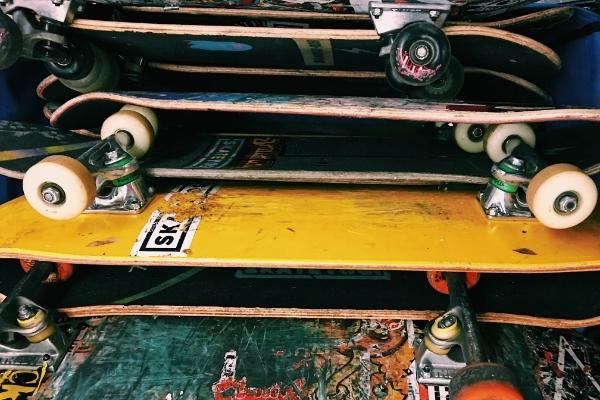
Skateboards
Your content goes here. Edit or remove this text inline or in the module Content settings. You can also style every aspect of this content in the module Design settings and even apply custom CSS to this text in the module
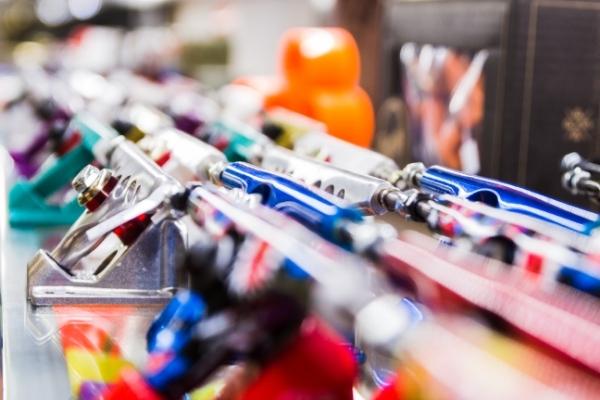
Wheels, Trucks ect
Your content goes here. Edit or remove this text inline or in the module Content settings. You can also style every aspect of this content in the module Design settings and even apply custom CSS to this text in the module
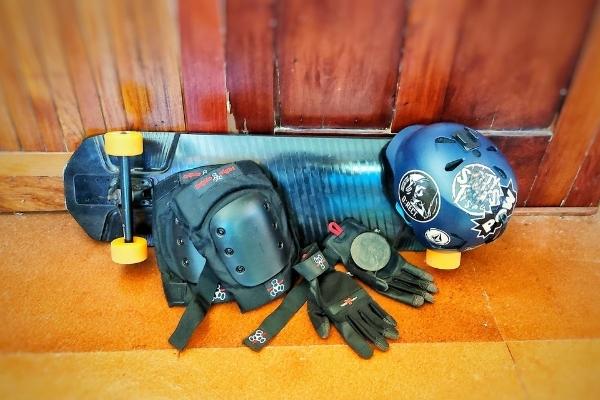
Helmets, Gloves ect
Your content goes here. Edit or remove this text inline or in the module Content settings. You can also style every aspect of this content in the module Design settings and even apply custom CSS to this text in the module
Fully lit knowledge to help you buy smart, and shred hard
Get the Best Longboard – The Easy Way
Longboard skating is tons of fun. But we wish we’d say the same about choosing the perfect longboard for your riding styles and budget.
There are different types of longboard setups varying in terms of shape, construction materials, and deck design. In addition, different longboards are engineered with particular riding styles and rider abilities in mind. And every single feature affects the ride quality and what you can do.
So, yeah, it’s understandable to feel overwhelmed and confused when trying to choose your first longboard. But don’t fret- we’re here to make this process less complicated, so you can get out there and shred sooner than later.
Consider this the ultimate guide on how to choose the right longboard for you. Our team of like-minded longboarders dive into the diverse world of longboards to explain the nitty-gritty that goes into buying the best longboard for beginners and pros.
We also don’t mind going the extra mile to compare the best longboards to buy this year. In the reviews section, you’ll find models that we’ve independently tested and which we can confidently recommend across all shredding styles from carving to cruising and downhill racing.
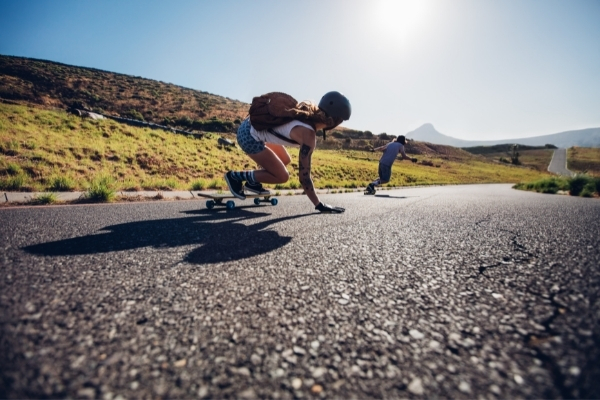
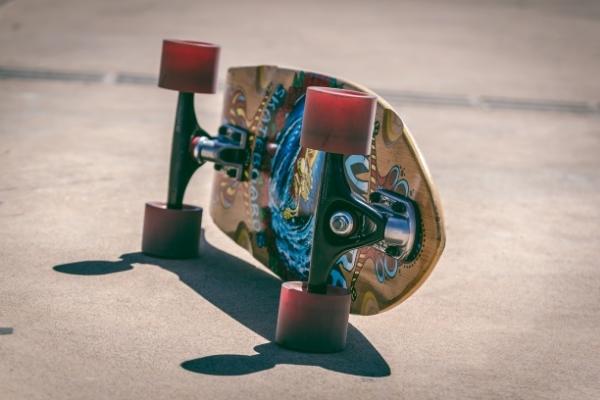
Longboard Riding Styles
Anatomy of a Longboard
(Shapes / Features)
Longboard Types and their Usage
5 Types of Longboard Riding Styles Explained
Cruising Longboarding
This is the most common and the easiest longboarding style- and everybody from starters to pros can do it. Cruising is a gentle and relaxed form of longboarding that involves using simple pushes to get from point A to B. You may need to do a few maneuvers to navigate around obstacles and people. But still, the activities are pretty straightforward and not as complicated as in other forms of longboard rides.
Any longboard can be used for cruising, but the market has specific models for this purpose. Cruising longboards are the best if you’re just starting to learn how to longboard. That’s because they have large wheels that can easily roll over cracks and bumps and are more stable.
Carving
Now, as you get used to cruising in flowy and fluidy straight lines, you’ll feel an urge to mimic some of the techniques that you may have seen other longboarders showing off. Carving is among the first tricks that most people learn on a longboard. Actually, besides being fun, every boarding fanatic needs to perfect the act of carving as it’s how you’ll be maneuvering the board back and forth. Additionally, this basic technique forms the basis for other advanced longboarding tricks.
So, what is carving on a longboard? Carving in the world of longboards refers to surfing in quick consecutive S-shaped or wavy patterns instead of moving in a straight line.
To learn how to carve on a longboard, you first need to get the board rolling and get into your comfortable stance on the deck. Next, you want to spread your arms out, bend your knees a little bit, shift your body weight from your toe side and then to your heel side. We find turning the shoulders and looking where you want to go also helps in making smooth turns.
Carving a longboard is important for these reasons;
-
- It’s an effective way of slowing down.
- Carving lets you travel further without expending a lot of effort pumping.
- It’s lotsa fun!
Downhill Longboarding
Intermediate longboarders looking to accomplish something challenging will prefer this style of longboarding. As the name suggests, downhill longboarding involves racing down steep slopes at god-forbidden speeds while maintaining excellent control of the board. Unlike freeriding, downhill racing is speed-oriented and relatively more organized.
Downhill longboarding addicts often clock speeds of up to 80 mph. But the fastest rider on a longboard, Pete Connolly from the UK, once hit a jaw-dropping speed of 91.17 mph.
Racing downhill on a longboard comes with extremely high injury risks, so we like considering this an advanced longboarding style. For beginners, it’s essential to master advanced speed control, braking, and turning skills. Making deep carving turns and slides is also crucial to slow down the board to avoid getting yourself into trouble.
Bombing downhill requires a stiff board for maximum stability and control. Soft wheels are also highly favored as they offer a higher grip.
Freeriding
One of the latest longboarding styles, freeriding, is similar to downhill boarding except that it’s more trick oriented. Although speed is an essential part of this style, the rider emphasizes tricks, such as flips, sliding, tailwhips, and early grabs. Additionally, you need to possess aggressive sliding and carving techniques to slow down the board to maximize all the opportunities for tricks.
Freestyle / Dance
There’s a lot of confusion on the difference between freestyle and freeride when longboarding. Although most skaters tend to use these names interchangeably, these longboarding styles are in entirely different realms from each other.
Freestyling is quite similar to freeriding in that it involves carving and sliding, but there’s a lot more to it. The major difference between the 2 is that while freeriding is done downhill, freestyling involves riding on relatively flat ground, for instance, on the streets and in skateparks.
Freestyle longboarding is more playful and calls for creativity. This is the most acrobatic of all longboard riding styles and requires oodles of technical and creative skills, such as kickflips, shuvits, regular and goofy rides in addition to sliding and carving. Freestyling longboarders also utilize different obstacles, such as handrails, stairways, and street curbs, to boost their creativity.
So, what’s your longboard riding style?
Having gone through the different styles of riding a longboard, we bet you now understand where you fall. Most beginners start by cruising as it’s easygoing. As they get more confident on the deck and learn new tricks, the desire to spice up things gets a good hold of them, leading them to try other longboarding styles.
The market has several longboards that can be used for a couple of riding styles. However, depending on your abilities and exact needs, you may want to narrow it down to a longboard that’s purposely engineered for a particular purpose. Depending on their intended usage, longboards differ in various areas, including size (length and width), deck construction, deck flex, mount type, and deck shape.
Anatomy of a Longboard (Shapes and Features)
Deck Construction Materials
A longboard deck is the flat board that makes the standing area. Depending on the intended style of the longboard, decks can be made from different materials, but maple, bamboo, and fiberglass composites are the most common.
Let’s compare different longboard deck materials and see what might work for you;
Maple Longboards
Maple longboards have all along been the most popular. These boards are made by gluing and stacking thin sheets (or veneers) of maple before pressing and cutting them into shape. As you probably understand, maple is one of the hardest woods, coming only second to hickory wood.
As expected, maple longboards are incredibly durable and can consistently withstand heavy abuse. These decks also tend to be comparably stiffer and heavier than bamboo boards, making them the best for cruisers and downhill longboards. Stiffness depends on the number of veneers used, though. As a rule of thumb, the more sheets used, the stiffer the board is.
Bamboo longboards
Bamboo longboards are slowly taking center stage. Their increasing popularity is partly fueled by the fact that bamboo is environmentally friendlier than maple. These boards are made by wrapping several sheets of laminated bamboo with fiberglass. The result is a deck that’s 2-3 ounces lighter than maple.
The best bamboo longboards can accomplish pretty much anything that traditional maple decks are capable of. Besides their lightweight feel, bamboo longboards are famed for being more flexible. For this reason, they are the preferred option for riding on rugged terrains with sharp turns.
Carbon fiber longboards
Popular with pro skaters, carbon fiber longboards are made by blending a lightweight wood (bamboo is the most common) with foam to make the core of the board. This is then wrapped in fiberglass to add rigidity. Generally, carbon fiber longboards are awesomely stiffer than bamboo but almost equally lightweight. Thanks to their construction design, you’re able to push off faster and negotiate turns and slides effortlessly.
Longboard Board Flex (Stiff, Medium, or Soft?)
All longboards come with a degree of flex, ranging from soft to stiff. Flexibility in longboards is mainly determined by deck material and thickness. However, other factors, such as wheelbase and concavity, have a hand in how stiff or soft the longboard is. So, what is a good flex for a longboard?
Soft longboards
Soft longboards have excellent shock absorption capabilities making them more forgiving when riding on uneven terrains. For this reason, they are an excellent choice for beginners learning how to balance on the deck. Their major downside is that they tend to get very unstable at medium to high speeds.
Best for: mellow cruising
Medium longboards
These longboards offer decent shock absorption, which maintains stability when going over bumps and cracks at medium speed. They also have a spring-like feel that maximizes your effort when building momentum using pushes and carves.
Best for: freestyling, commuting, carving, and moderate speed cruising
Stiff longboards
Stiff longboards tend to be the most stable when going above the speed limit. This helps a lot by delivering the response that you need to maintain complete control of the board. A longboard that doesn’t wobble a lot when bombing hills should also boost your confidence to go fast and slide. The only small snag, however, is that stiff longboards are the least forgiving when riding on bumpy roads and pavements.
Best for: medium-stiff boards are ideal for freeride style longboarding. For downhill riding, you want to lean towards a stiffer deck.
Deck Shape
Longboards come in 2 major shapes;
1. Directional longboards– these are boards that only ride in the forward direction. Most of them are defined by a pointy, round, or square tail that creates an awkward feel when doing switch maneuvers. The most recognizable directional longboards are pintail and fishtail longboards. Most downhill decks and some cruisers are directional because there’s minimal focus on doing 180° direction changes.
2. Twin/symmetrical longboards– you’re right. These are multidirectional longboards that can easily ride in either direction. This shape makes them perfect for freestyle and freeride styles of longboarding.
Deck Features
In addition to being either directional or symmetrical, different types of longboards have various features that leverage their design to deliver the expected riding experience. Let’s go through some of the most common:
Concave profiles
Concave longboards have a curved standing area. Basically, this means that the edges are slightly raised above the center. This curvature combines with the grip tape to lock in your toes and heels onto the deck, giving you more control of the board.
Longboards use different concave profiles in an attempt to maximize secure foot grip, control, and overall rider experience.
There are 3 major longboard concave profiles to choose from in the market today;
Cambered profile
The middle of the deck is raised higher than the nose and tail. This profile is a good option for those who want to carve it up as it gives the board a springy flex that gives super nice carves. In addition, the raised standing area means that the longboard has a comparably higher ride height, which translates to more lean and better turns.
Rocker
While cambered concaves curve upwards, rocker profiles curve downwards. Essentially, this means that the foot area is visibly lower compared to both ends. As a result, this profile boasts a lower rider height, which equates to a lower center of gravity. Rocker concave is common in longboards that require dead flex, like downhill and freeride boards.
W-concave
A W-concave design is akin to having 2 radial concaves on one deck. This concept offers more grip by offering riders something to push their toes against. Also, w concave means that you’re always aware of your foot placement on the deck. This feature is mostly common in downhill and freeride longboards. It offers among the best feelings when downhilling all day, so expect to pay a little more for it.
Wheel wells/wheel cutouts
Wheel well and wheel cutouts are simple but incredibly useful features that prevent the dreaded wheel bite. A wheel bite occurs when the deck momentarily touches the wheels stopping the rotation. This happens when you turn or lean too much and can easily get you tossed off the deck.
With wheel wells, manufacturers press in the arches to mould the pocket. Because there’s no cutting involved, the longboard retains its clean look and deck strength. However, if the board is intended for serious turns, manufacturers make a cutout to create a very deep wheel well and eliminate the risk of bites completely.
Kicktails
Kicktails are the traditional upward bent tips that you see at the end of skateboards. While they are a necessity in skateboards, some longboard models have them while others don’t. When present, kicktails come in handy when turning and doing tricks. Even if you’re not into advanced longboard tricks, kicktails make it possible to lift the front trucks over cracks and debris, making your rides even more comfortable, fun, and enjoyable.
Understanding Longboard Board Length and Wheelbase
There are 3 vital components that you need to mull over when choosing the right longboard size: board length, board width, and wheelbase. These 3 elements impact the weight and stability of the board, collectively affecting the quality of your rides.
What matters most when you want to choose the right longboard size is:
-
- Your height
- Your preferred riding style
The table below summarizes the recommended longboard size according to the rider’s height and riding style. However, remember that everyone is different, and no single longboard works for all skaters. So, this information is more of a general guide on what works for most longboarders.
| LONGBOARDING STYLE | YOUR HEIGHT | SUGGESTED LONGBOARD SIZE |
|---|---|---|
| Cruising | 5’10” and below | 32” to 42” |
| Above 5’10” | 42” and longer | |
| Freestyle and Freeride | 5’10” and below | 38” to 42” |
| Above 5’10” | 38” to 42” | |
| Downhill | 5’10” and below | 35” to 42” |
| Above 5’10” | 42” and longer |
Looking for more details on how the size of the longboard affects your rides? Here are a few key concepts that might help you choose the right size of longboard.
Longer boards
-
- Are more stable and comfortable, especially if they have flex
- Have more standing room
- Offer the best carving experiences
- Offer less turn
- Are comparably heavier
- Are a tad hard to chuck around
Shorter boards
-
- Easier to chuck around than longer boards
- Offer relatively more turn
- Have less stand room
- Give you a superior feel of the board leading to better control
- Offer more turn
- Are less stable
- Are relatively lightweight
- Tend to be bouncier, especially if they lack flex
- Wider boards
Wider boards
-
- Have a larger leg space
- Tend to be heavier
- Are relatively turny since there’s minimal stress on the bushing.
- Are more prone to wheel bites, although this risk can be avoided by getting a deck with wheel wells.
Narrow boards
-
- Relatively harder to ride for beginners owing to the small standing room.
- Tend to be less turny
- Are lighter
When buying your first longboard, we recommend going for a board with a longer wheelbase. While they are less turny, they are stable at high speeds. Their predictability and easy control will also go a long way toward developing your confidence.
Advanced skaters often prefer shorter wheelbases as they are more responsive to technical moves when freeriding and speeding downhill. But don’t forget that these boards tend to be less predictable during slides.
Trucks (mount type)
Trucks are the metallic T-shaped pieces that attach the wheel assembly to the deck of the longboard. On the other hand, mount type or style refers to how these trucks attach to the board. Knowledge of mount type is crucial when buying a longboard because it directly affects the deck height- the distance from the top of the deck to the ground.
Generally, a deck that’s higher off the ground will have a higher center of gravity, leading to increased turn leverage and minimal risk of bottoming out when pulling hard turns. The major drawback to riding a taller deck is its decreased stability. A tall board also means that you’ll be expending more energy when dropping to kick the pavement and foot-braking. This is likely to cause more fatigue, especially when commuting longer distances.
On the other hand, a deck that rides low will be more stable and is much easier to push and brake with your foot. But the tradeoff is that you’ll have less leverage when making quick carves. Also, the risk of bottoming out is much higher when riding low.
There are 4 popular mount types:
Top mount– the trucks are bolted below the deck. This is the easiest style to make of all mount types. As such, it’s the most common and the cheapest. However, note that this style puts the deck higher off the ground leading to the issues that we’ve pointed out above. All in all, this style is the jack-of-all-trades and can be used on cruising, carving, freestyle, freeride, and downhill longboards.
Drop through– these longboards have cutouts on both ends of the deck where the trucks are “dropped through.” This design lowers the deck closer to the ground, effectively lowering the center of gravity. The best drop through longboards are more stable and less fatiguing when kicking and braking. These attributes make them the best longboards for riding long distances. The increased stability also makes them ideal for downhill and freeride longboarding styles.
Drop deck– this is not a mount style par se, but a longboard design. With a drop deck, the leg space on the board (where you position your legs when skating) is molded to sit slightly below the trucks’ mounting points. Most of these boards have a top-mount truck style, but the curved deck effectively lowers the center of gravity, leading to increased stability. Drop deck mounts are common in downhill and freeride style longboards. Drop deck boards are a great option for beginner longboarders.
Double drop– these longboards bring your feet closer to the ground in two levels; first, using a drop deck board design, and second, using drop through truck mount style. Hence the name double drop. Double drop longboards bring you as close to the ground as realistically possible. Thus, they are the most stable. This design is not common due to its complex construction, but you’ll find it in some downhill longboards.
Having gone through the general characteristics and features of longboards, let’s see how various build designs combine to make different longboard types for different riding styles.
Guide to Different Types of Longboards and their Common Usage
1. Cruising longboards
These are the most common types of longboards and probably what most beginners think of when getting into this sport. These longboards are designed to be fairly easy to use and offer an amazing form of relaxed transportation to school, around town, and along the beach.
Typically, cruising longboards have big, pintail-shaped decks with moderate flex. Their board length ranges from 32″ to well over 40″. Longboarders with a height of up 5’10” will appreciate 32-40″ cruising longboards, while taller individuals are better off with longer boards.
Another influential feature of cruising longboards is their top-mount design. This means that the trucks have been bolted directly underneath the deck. This design increases stability besides making it easy to push and cruise. Top-mount trucks also offer you more turn capability, making carving possible. And thanks to their large, smooth wheels, cruising longboards tend to roll over sidewalk cracks and bumps breezily.
2. Carving longboards
Carving longboards are specially designed for longboarders who want to perfect their leaning techniques. Carving is a longboarding style by itself. So, if you fancy the feeling akin to ocean surfing or snowboarding, this is where you should begin your search.
What makes a good carving longboard? Well, carving longboards are quite similar to cruising boards. For instance, like cruisers, carving longboards are top-mounted and have a mid-size deck in the range of 32-42″.
However, these models are a bit more fine-tuned to let you truly lean when turning. One outstanding feature of carving longboards is their cambered deck design, which increases the board’s response to the rider’s pumping action to produce momentum. These boards also have a decent amount of flex for easy and energetic follow-through.
Regarding the wheels, carving longboards are fitted with large, soft wheels for increasing friction when turning. The board also features wheel well cut-out to prevent wheel bites when you take a deep lean.
3. Freeride longboards
Freeride is a longboarding style characterized by riding downhill while blending a lot of tactics from sliding, carving, and drifting to 180s and stand up rides. Freeride longboards come in all shapes and sizes.
But most freeriders prefer 38-42″ symmetrical boards because this style involves a lot of switch riding. Such boards are important because you don’t feel backwards when doing switch maneuvers, such as the 180s and drifts.
Another main feature of freeride longboards is that their decks are often drop-through. This lowers the distance between the deck and the ground leading to a lower center of gravity and increased stability.
You’ll also realize that the best freeride longboards are fairly stiffer than most average freestyle boards. Most of them also tend to have sort of pockets for your foot on the deck.
These features give the longboard a more playful design and also add to its stability and ease of control while riding downhill.
4. Freestyle longboards
Freestyle longboards have a comparably larger deck than freeride boards because the aim is to let you express yourself fully. Unlike freeride longboards that have a focus on speed, freestyle models are more into flowy rides with a lot of flatland tricks.
At a glance, freestyle and freeride longboards are quite similar. However, freestyle longboard decks are notably wider and less stiffer than freeride boards. The hardness level varies between models, though, so this comes down to personal preference.
Freestyle longboards come in 2 designs as far as mount type is concerned; drop-through and top-mounted. Drop-through boards are the most common. However, they are more prone to breaking because they run thin at the truck mounts. For that reason, heavy riders and freestyle longboarders who tend to push the board to the extreme will want to gravitate towards top-mounted models.
5. Downhill longboards
Nothing screams extreme in the world of longboarding than racing downhill. It does, at times, get dangerous. But then again, this is the pinnacle of the sport for most longboarding fanatics. As a matter of fact, downhill longboarders are among the most safety-conscious riders in this community. Additionally, the best downhill longboards are geared towards making your rides relatively safer when pre-drifting hairpins and flying through chicanes.
There are a lot of crossovers between downhill and freeride longboards. That’s to say that some freeride decks can be used for downhill racing and vice versa. We do, however, recommend sticking with longboards that are particularly designed for downhill, especially if you’re out to gratify your need for speed.
The first thing that defines a downhill longboard is its stiff deck. This is particularly important as it gives you more stability, consequently increasing your safety.
The wheelbase is another vital consideration when buying downhill longboards. Typically, you’ll want something between 35″ and 42″. As a rule of thumb, longer boards are ideal for starters as they are more stable. As you get more comfortable on the deck, you’ll want a shorter deck as it offers you a little more control.
The best downhill longboards in the market also boast a w-concave design in front and at the back. These sections offer you more grip to keep you on the deck when pre-drifting.




